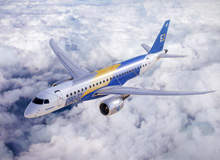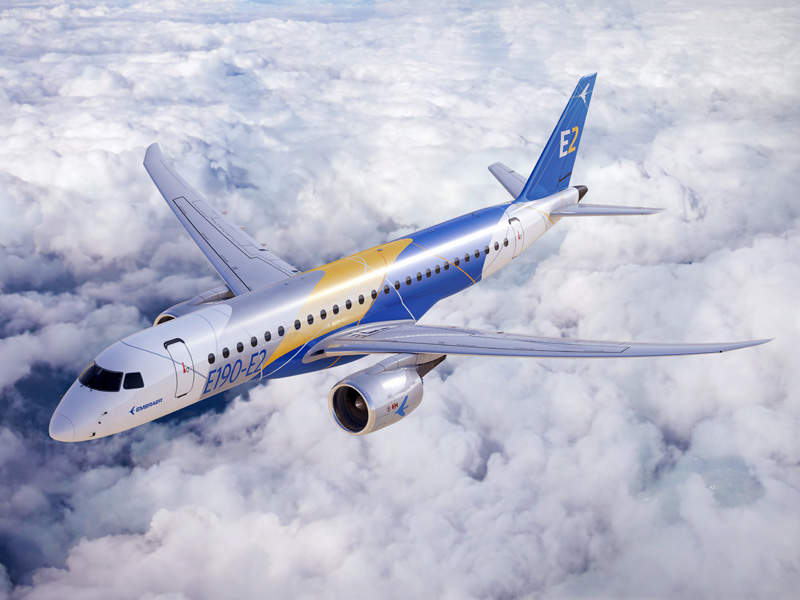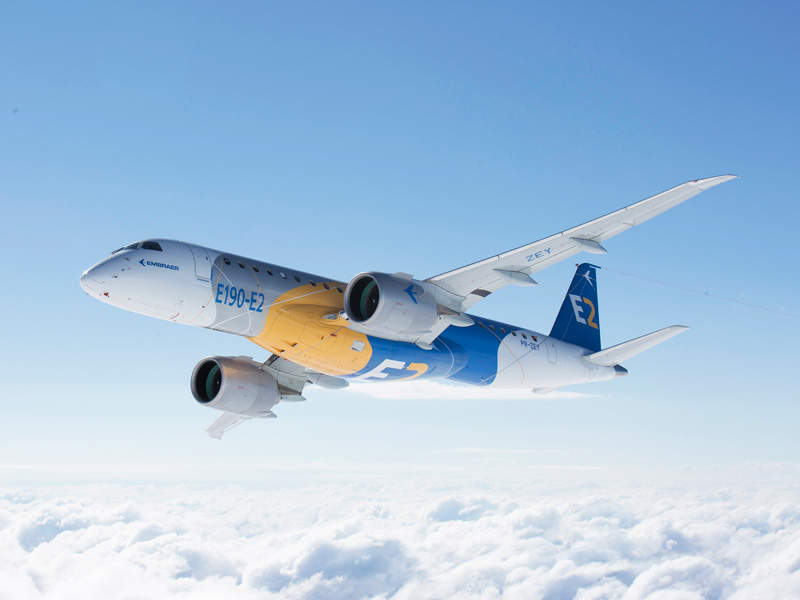E-190E2 is the first of three new second-generation E-Jet models developed by Embraer. The first prototype of the E-190E2 aircraft made its public debut at Brazil’s São José dos Campos facility in February 2016.
The first flight of the aircraft was completed in May 2016. It flew for three hours and 20 minutes to initiate the commencement of the certification campaign for the model. The aircraft is expected to enter commercial service by 2018.
The other two models in the E-Jet series include E195-E2 and E175-E2, which are scheduled to enter service by 2019 and 2020, respectively. The development of the E2 aircraft series was launched by Embraer at the Paris Air Show in June 2013. The company is estimated to have invested $1.7bn for the development of the three aircraft.
Design features of E-190E2
The E-190E2 aircraft is designed to have maximum fuel efficiency. It includes closed-loop configuration, which reduces aircraft drag and weight. The aircraft comes with high-aspect ratio wings with swept tips attached with redesigned pylons, and other aerodynamic improvements.
It features AHEAD-PRO, a computational web-based platform for monitoring health and providing timely maintenance information.
The aircraft’s external dimensions include a length of 36.2m, height of 11m and wingspan of 33.7m.
Cockpit and avionics of the E-190E2 business jet
The E-190E2 aircraft comes with an advanced integrated avionics system, which provides situational awareness enhanced by large landscape displays for a reduced pilot workload. The avionics comprise technologies including synthetic vision and advanced flight management systems.
The aircraft features cockpit commonality with current-generation E-Jets to allow a smooth transition to the new E2 platform. It is equipped with wireless connectivity and enhanced central maintenance computer SmartView™. It also includes an improved navigation system with graphical flight planning, next-generation flight management system (FMS), INAV® navigation, and ground-based augmentation system (GBAS).
It also comes with improved situational awareness, including cockpit display of traffic, IntuVue™ 3D weather radar, and SmartRunway™ and SmartLanding™ features.
Cabin details of E-190E2 business jet
The E190-E2 has the same number of seats as the current-generation E190, and can be configured with 97 seats in dual-class or 106 seats in a single-class layout. The first-class layout features a two-plus-one concept, whereas the economy-class comes with a two-plus-two configuration.
The economy-class features 12in seat-back screens and upper literature pockets to maximise legroom. The first-class features increased leg space with a maximum seat width of 23in. The cabin interior features the use of contemporary materials, quality fabrics and glass partitions.
The cabin features new overhead bins for baggage. The bin doors are coupled with dramatic ceiling illumination to create a sense of height and space above the aisle. It includes personal storage units for both economy and first-class configurations.
Engine and performance details of E-190E2 business jet
The aircraft is powered by a PW1900G PurePower® geared turbofan (GTF) engine manufactured by Pratt & Whitney. The engine features a very high bypass fan with a 73in diameter and weight of 3.19kg.
The maximum operating speed is Mach 0.82 and maximum range is 2,800nm (5,186km). The take-off field length required is 1,650m (5,413ft) and landing field length is 1,315m (4,314ft).
The aircraft has a maximum take-off weight of 56,200kg, while the maximum landing weight is 48,730kg. It can carry a payload of 13,080kg and has a service ceiling of 41,000ft.





